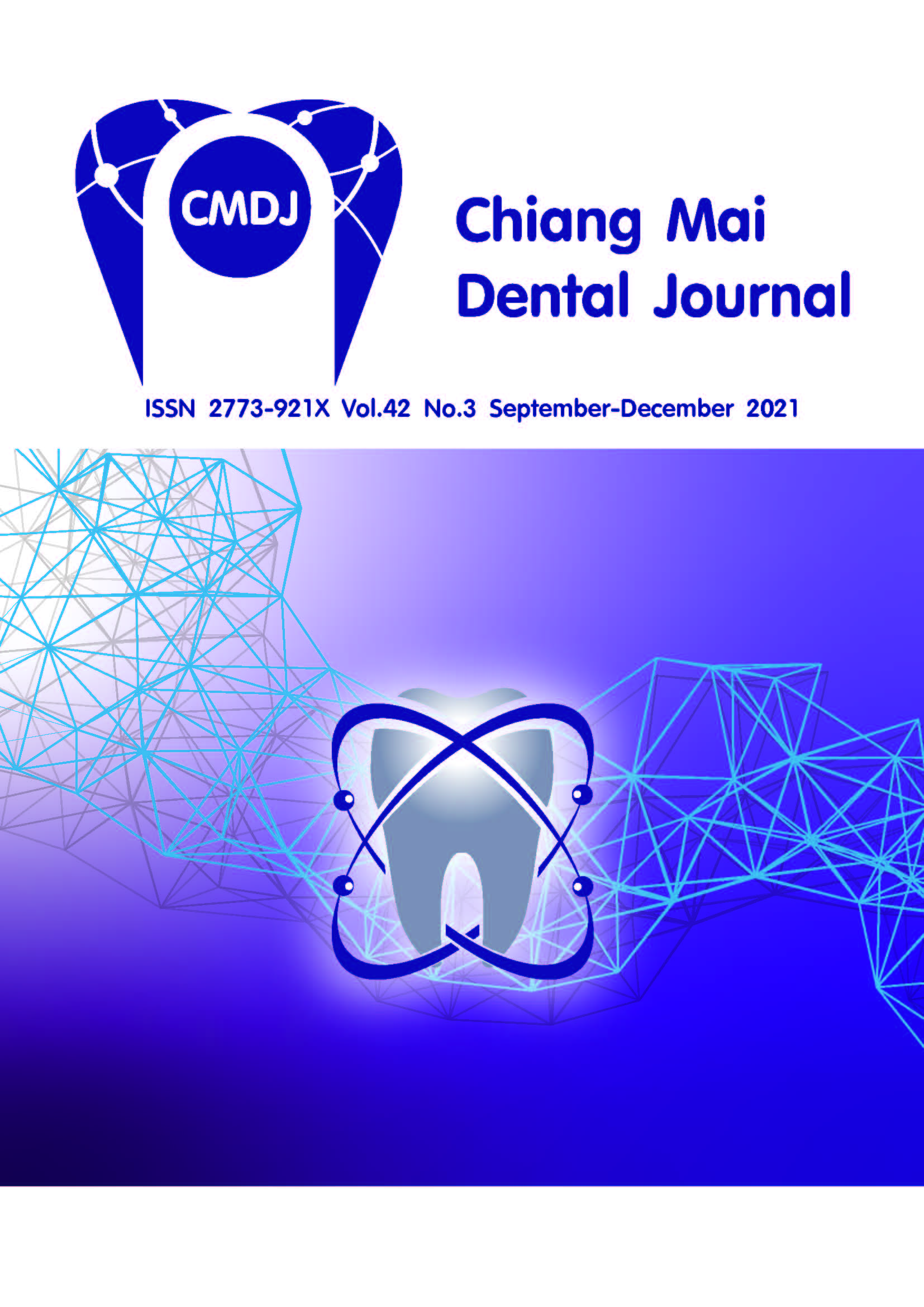The Effect of Liquid Toothpaste compared with Conventional Toothpaste on Plaque Score
Main Article Content
Abstract
Abstract
Introduction: The new product, a liquid toothpaste, has been introduced to the market. It is claimed that its liquid form can better clean the proximal surfaces of the tooth, improves gingival health and controls bacterial growth.
Objective: To investigate the effectiveness of a liquid and a cream toothpaste on dental plaque score.
Materials and Methods: Thirteen subjects, aged 20–23 years old participated in this randomized controlled crossover clinical study. The study was conducted in 2 phases of 4-weeks each with a washout period of 1 week between phases. The subjects were randomized into two groups: Jintan-NUDE aqua mint® and Colgate Total Advance Fresh® and instructed to perform routine brushing with the assigned toothpastes. Total plaque scores (PS) and proximal plaque scores (PPS) were assessed by one examiner using a Turesky modification of the Quigley and Hein plaque index (TMQHI) 4 times during each phase: baseline (t0), immediately after use (t1), after the second week (t2), and fourth week (t3) of toothpaste use. Repeated ANOVA was used to compare the differences within each group and the independent t-test was used to compare the differences between groups at t0, t1, t2, and t3 at p<0.05.
Results: The mean PS and PPS of the groups were not significantly different at each evaluation point, except for the PS of the liquid group at t2, which was significantly higher than that of the cream group. The PS and PPS in each group at t1 were significantly lower compared with t0, t2, t3 and the PS of the liquid toothpaste group at t2 was significantly higher than that at t0. The differences between the other time points were not significant.
Conclusion: Overall, the liquid and cream toothpastes have similar effectiveness in controlling plaque scores at the proximal surfaces of the teeth and total plaque scores. This study indicates that liquid toothpaste is an alternative to cream toothpaste
Article Details
References
2. Amrutesh S, Malini J, Tandur PS, et al. Clinical evaluation of a novel herbal dental cream in plaque formation: a double-blind, randomized, controlled clinical trial. J Exp Pharmacol 2010; 2: 105.
3. Fine DH. Chemical agents to prevent and regulate plaque development. J Periodontol 2000 1995; 8: 87-107.
4. Quigley GA and Hein JW. Comparative cleansing efficiency of manual and power brushing. J Am Dent Assoc 1962; 65: 26-29.
5. Turesky S, Gilmore ND and Glickman I. Reduced plaque formation by the chloromethyl analogue of victamine C. J Periodontol 1970; 41: 41-43.
6. Bhat N, Bapat S, Asawa K, et al. The antiplaque efficacy of propolis-based herbal toothpaste: a crossover clinical study. J Nat Sci Biol Med 2015; 6: 364.
7. Jayakumar A, Padmini H, Haritha A, et al. Role of dentifrice in plaque removal: A clinical trial. Indian J Dent Res 2010; 21: 213.
8. Al Habashneh R, Farasin R and Khader Y. The effect of a triclosan/copolymer/fluoride toothpaste on plaque formation, gingivitis, and dentin hypersensitivity: a single-blinded randomized clinical study. Quintessence Int 2017; 48: 123-130.
9. Cagetti MG, Strohmenger L, Basile V, et al. Effect of a toothpaste containing triclosan, cetylpyridinium chloride, and essential oils on gingival status in schoolchildren: a randomized clinical pilot study. Quintessence Int 2015; 46.
10. Saxton C. The effects of a dentifrice containing zinc citrate and 2, 4, 4’trichloro‐2’‐hydroxydiphenyl ether. J Periodontol 1986; 57: 555-561.


